by Craig Brelsford
Founder, shanghaibirding.com
Each spring and autumn, two species of paradise flycatcher pass through Shanghai: Japanese Paradise Flycatcher Terpsiphone atrocaudata atrocaudata and Amur Paradise Flycatcher T. incei. The two species can seem confusingly similar, especially in the poor light of a wood. With a little practice you can tell the males apart, and with a lot of practice you should be able to separate the females. Here is what you need to know:
• If in Shanghai you see a white-morph paradise flycatcher, then by definition you are not looking at Japanese Paradise Flycatcher, and you are almost certainly looking at Amur Paradise Flycatcher.
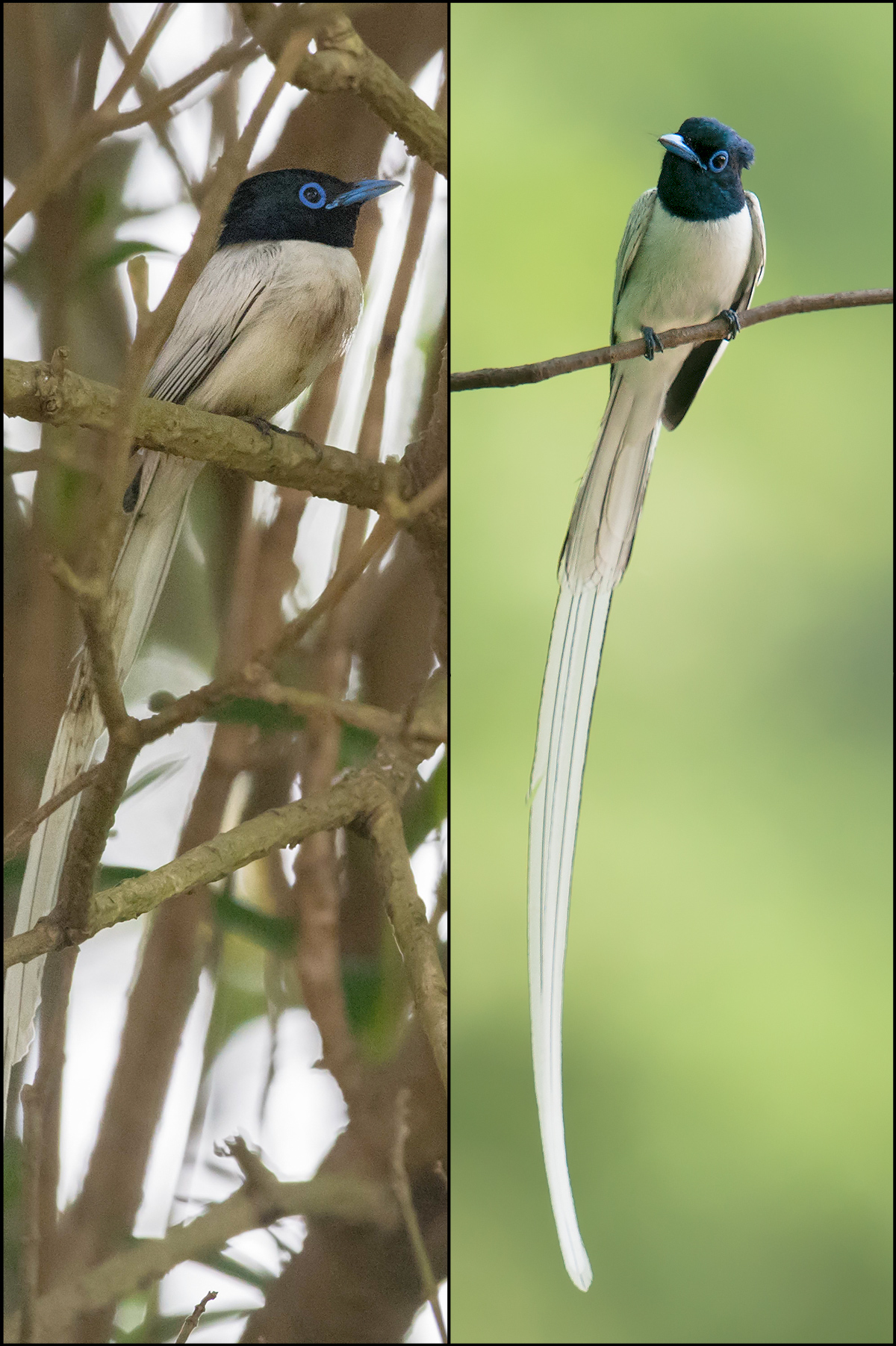
No white morph exists in Japanese (Brazil). Regarding Amur, among my sources only Brazil expresses doubt about the existence of a white morph. shanghaibirding.com contributor John MacKinnon (A Field Guide to the Birds of China) and C.W. Moeliker (Handbook of the Birds of the World, Vol. 11) assure us that Amur white morph does exist. MacKinnon says that Amur white morph accounts for less than half of adult males.
We know that Amur white morph exists because we have seen it ourselves. On 30 May, Kai Pflug photographed an Amur white morph at Cape Nanhui, the coastal birding site in Shanghai. In May at Dongzhai, Henan, 680 km (423 mi.) inland from Shanghai, I found an Amur white morph.
Could a white morph from a third species occur in Shanghai? Although the movements of paradise flycatchers are “complex and not fully understood” (Moeliker), I think we can presume that it is unlikely. The nearest third species is Blyth’s or Oriental Paradise Flycatcher T. affinis saturatior, which according to MacKinnon winters no closer to Shanghai than Guangdong.
• The mantle, wings, rump, and tail of rufous-morph male Amur are rufous-brown; in Japanese, the mantle, wings, and rump are purplish-brown, and the tail is black.
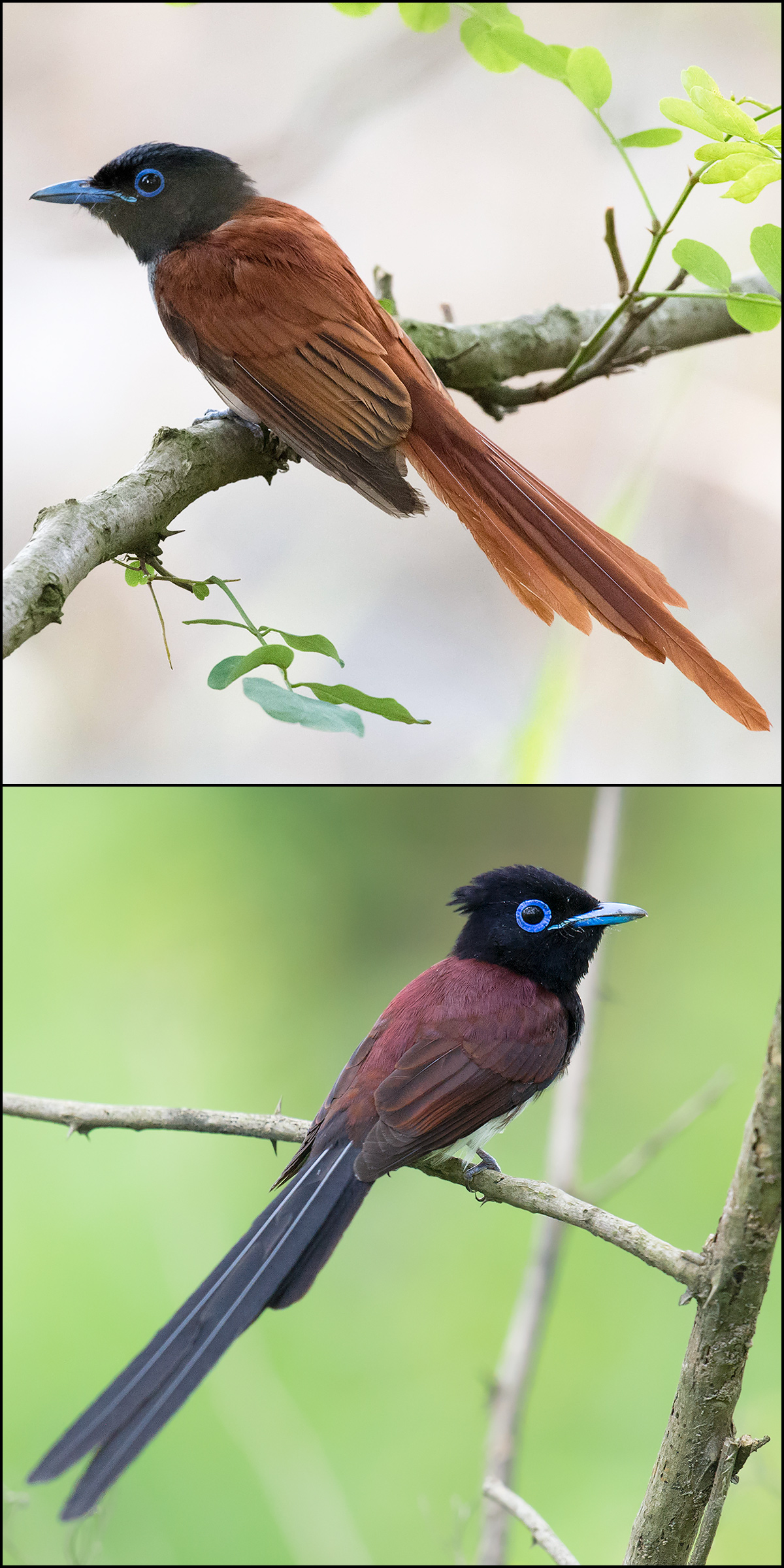
The pictures speak for themselves. In good light you should have little trouble telling the two apart. The cinnamon tones of Amur are often what Shanghai birders notice first.
• Male Japanese has a black head and a black breast, forming a large hood. Amur rufous morph has black head and grey breast, forming a two-tone hood.
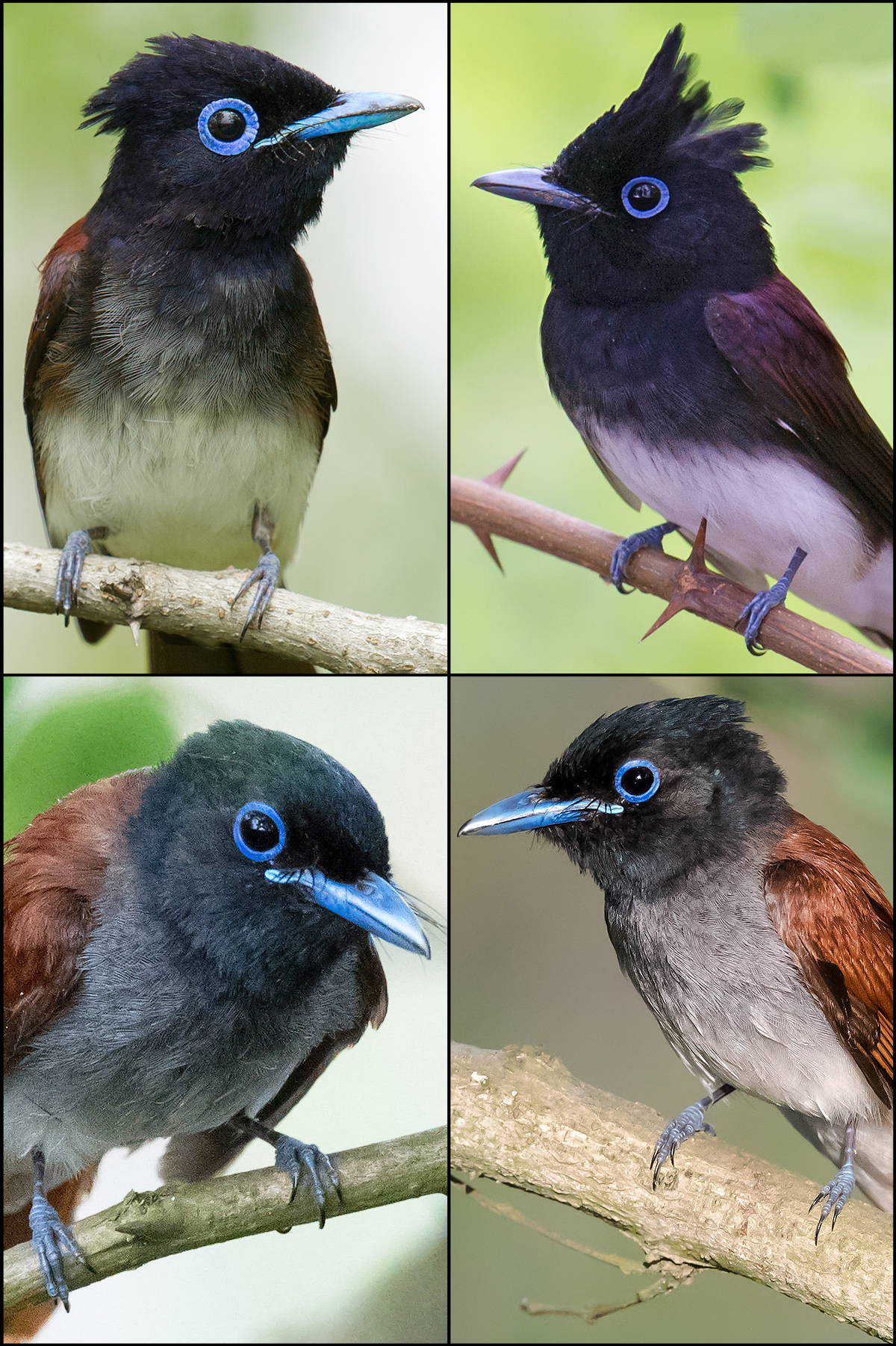
The hood of Amur has in addition more of a bluish tint than that of Japanese. Note the blue tint in the hood of Amur bottom left. Note also that the cobalt-blue eye ring of Japanese (top left) tends to be larger than the eye ring of Amur.
The females require more care to separate. Be persistent, get a good view, and try to get a photo. Note the following:
• Compared to Amur female, Japanese female has darker, duller, and less rufous mantle, wings, rump, and tail. Japanese has much darker (nearly all-black) flight feathers and sooty primary coverts.
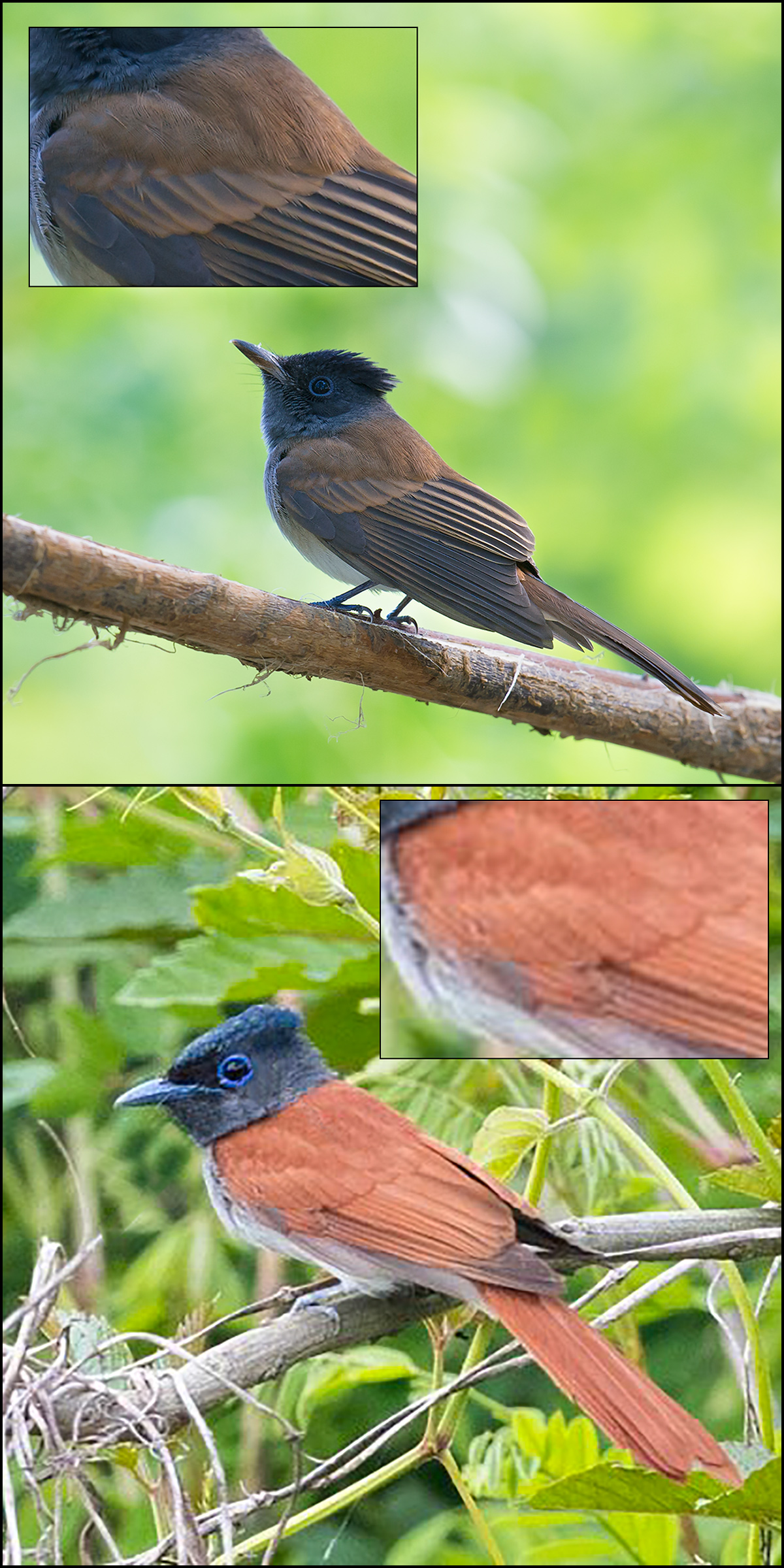
For the bit about the sooty primary coverts, I am indebted to David Gandy of Bangkok City Birding.
• In their head and breast coloring, female Japanese and Amur show a pattern similar to that of the males. Whereas Japanese is more concolorous (panels 3 and 4), Amur shows more of a contrast between head and breast (1a, 1b, 2). Both Japanese and Amur female have whitish bellies, but the darker breast of Japanese contrasts more with the whitish belly than is the case with Amur. The head is glossier in Amur than in Japanese, whose crown is dull (inset, Panel 3). Japanese has faint rufous flanks, unlike Amur.
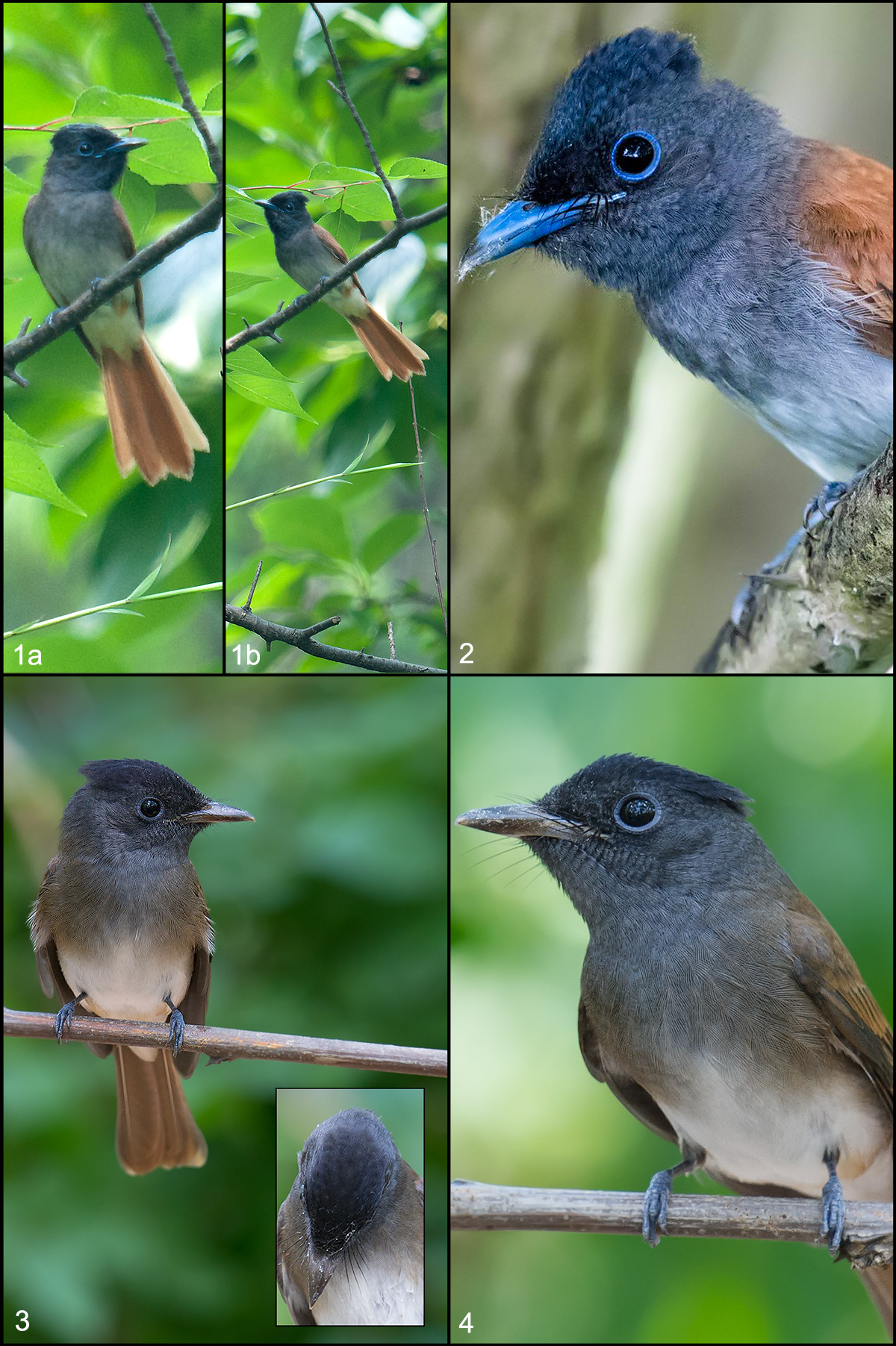
MAINLY SILENT IN SHANGHAI
In Shanghai, you will almost never hear a paradise flycatcher utter a sound. I have a single recording:
Japanese Paradise Flycatcher, call, Cape Nanhui, Shanghai, May (00:01; 848 KB; Craig Brelsford)
BACKGROUND ON THE SPECIES
Japanese Paradise Flycatcher Terpsiphone atrocaudata and Amur Paradise Flycatcher T. incei breed farther north than any other species in their mainly tropical genus. T. atrocaudata atrocaudata breeds in Korea, Japan, and Taiwan and is highly migratory, wintering as far south as Sumatra. (Birds in Taiwan, however, are largely resident.) T. incei, a monotypic species, is also highly migratory, with a breeding range extending into the Russian Far East and wintering grounds as far south as Java (Moeliker). Japanese is listed by the IUCN as Near Threatened, mainly because of habitat loss on its wintering grounds.
UPDATE
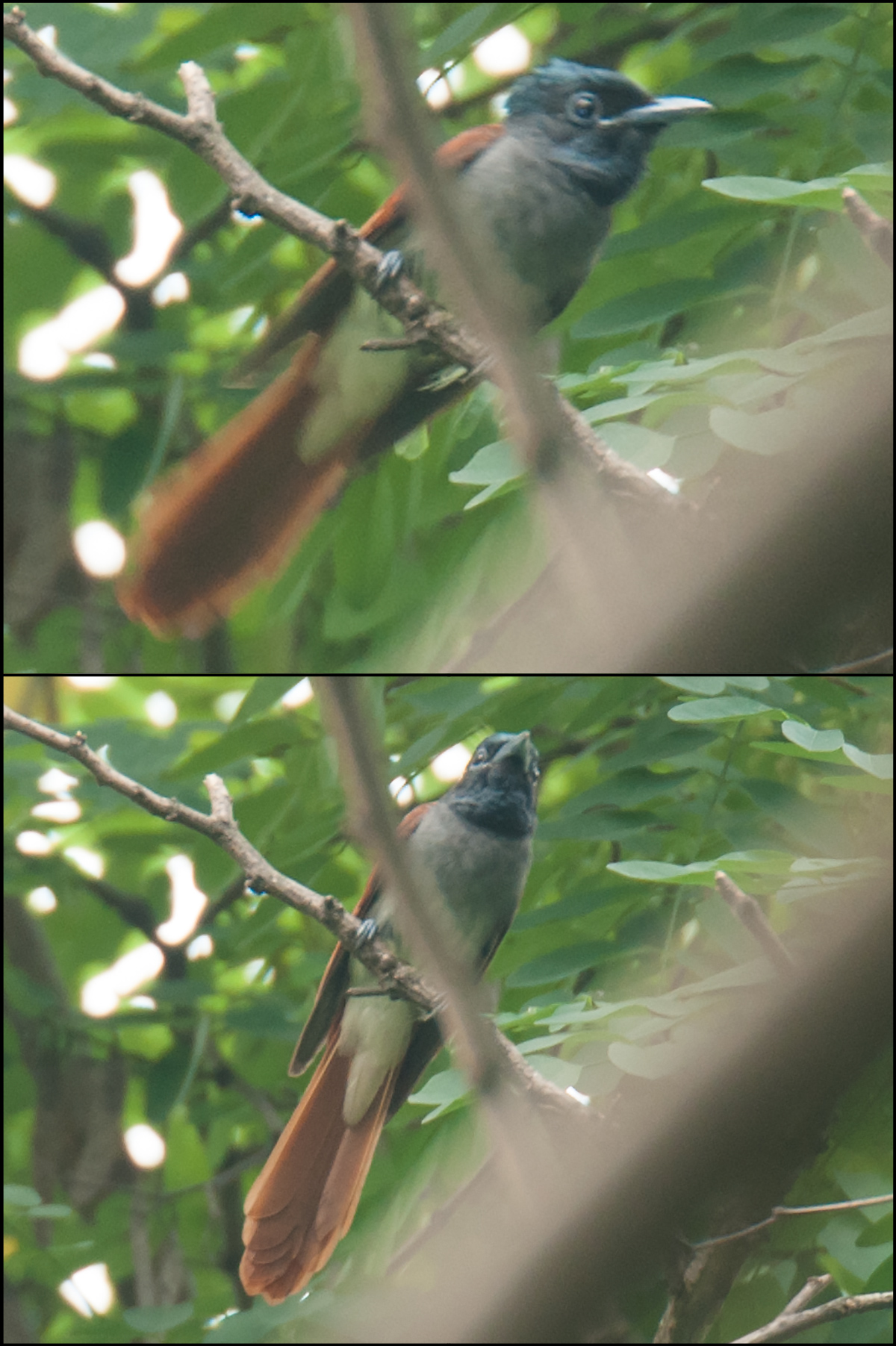
I have discovered two more photos of female Amur Paradise Flycatcher. The photos above were taken in July at Laoshan (32.071265, 118.560699), a site in Nanjing, Jiangsu 290 km (180 miles) inland from Shanghai. Note again in this Amur the contrast between bluish-black head and bluish-grey breast, the poorly defined border between the bluish-grey breast and the whitish belly, the lack of rufous coloration on the flanks, and the rufous-brown upperparts and tail, obviously brighter than in Japanese Paradise Flycatcher.
BIBLIOGRAPHY
Brazil, Mark. Birds of East Asia. Princeton University Press. Studied entries on Asian (Amur) Paradise Flycatcher and Japanese Paradise Flycatcher, p. 302.
del Hoyo, Josep, et al., eds. The Handbook of the Birds of the World. Lynx Edicions. Vol. 11, “Old World Flycatchers to Old World Warblers.” Species accounts for Asian (Amur) Paradise Flycatcher (p. 289) and Japanese Paradise Flycatcher (p. 290) written by C.W. Moeliker.
Gandy, David. Bangkok City Birding (http://bangkokcitybirding.blogspot.com/). Article “Hell in Paradise,” last accessed 1 Nov. 2019; inaccessible as of 30 Sept. 2020.
MacKinnon, John & Karen Phillipps. A Field Guide to the Birds of China. Oxford University Press, pp. 284–5.
Robson, Craig. Birds of Southeast Asia. Princeton University Press. Helpful insights on Terpsiphone atrocaudata, T. incei, and T. affinis saturatior on p. 180.
ACKNOWLEDGEMENTS
Special thanks to Kai Pflug. Kai’s images of Amur Paradise Flycatcher are a valuable record of this poorly known species.
Featured image: The featured image above shows a stunning male Japanese Paradise Flycatcher and serves to introduce our theme: How can birders tell apart the two species of the remarkable genus Terpsiphone that migrate through Shanghai? (Craig Brelsford)

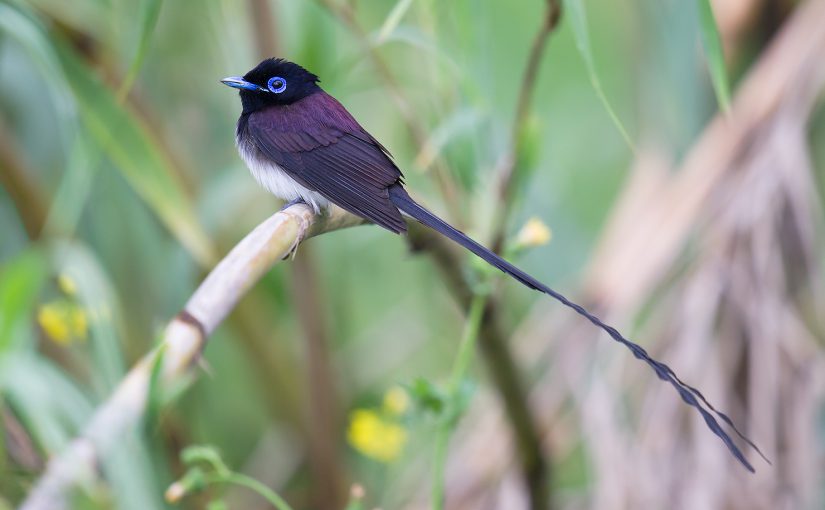
Good to see your ID article on paradise Flycatchers, and thanks for the plug on my article on the Japanese PF that I detailed on my blog.
I was only too happy to plug your excellent blog. The thing on sooty primary coverts was excellent, a very useful feature.
Happy to see your informative blog about birding in Shanghai.
I may wish to know any Amur Paradise Flycatcher Terpsiphone incei, white morph was observed in Nanhui, Shanghai recently.
This morning I saw a white-morph male, and a female, Paradise Fly sp. at Laoshan near Nanjing. I am wondering if you know which of the newly-split species (Blyth’s T. affinis or Amur T. incei) is found here? I cannot find any information on how to separate the species, except that Brazil states that incei is not known to have a white morph… this led me to believe it must be affinis, but this species is not listed on eBird for Jiangsu whereas incei is. Any help much appreciated!
Hi Jason, The species at Laoshan is Amur Paradise Flycatcher Terpsiphone incei, and incei does indeed have a white morph. See my explanation in this post.
Wow, thanks Craig, that was a super helpful reply! Your blog is a fount of knowledge!